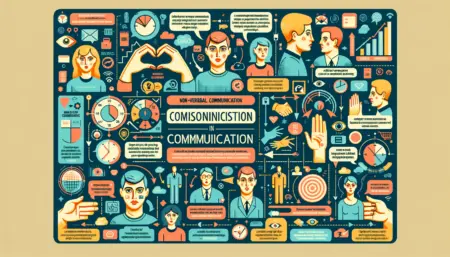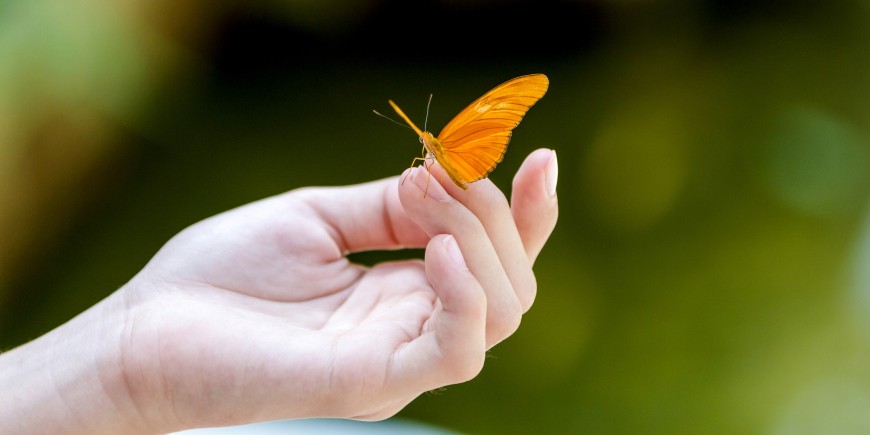Kinesics is the study of body motion as a form of communication. It is the most familiar type of nonverbal communication and it includes such areas as gestures, facial expressions, and eye movement.

Kinesics Gestures.
Gestures are one of the most obvious and common forms of nonverbal communication, and they are often used in place of words. For example, putting your first finger perpendicularly across your lips is a way of telling others “shhh.” Similarly, putting your hand out straight up with an open palm facing outward is a way of saying “stop.” Gestures are also used to illustrate or pictorialize what is being communicated. Giving a patient directions for how to get to the x-ray department, or showing a Patient how to change a dressing are examples Of situations where individuals would employ gestures in their communication with others.
In addition to illustrating, gestures play a major role in regulating the flow of conversations between two individuals. They help to establish the pace by regulating the back and forth speaking and listening of the individuals. For example, through a simple head nod we tell another person, “GO ahead and finish what you have to say,” or, by raising an eyebrow, we can let them know that “When you’re finished, I’d like to respond to your comments. ” Gestures such as these serve an important role in making conversations flow smoothly.
Kinesics Facial Expressions.
The human face provides a complex but rich source of information for health professionals and clients alike. For the most part, facial expressions are used to display emotions, either intentionally or unintentionally. How- ever, they are also used by individuals to punctuate conversations or regulate the flow Of interaction between two communicators.
It is essential for health professionals to understand clients’ emotions and facial expressions because some clients are reluctant at times to express their feelings verbally. Health professionals need to learn to interpret nonverbal facial expressions accurately, but this is no simple task, especially when one considers that facial expression is often controlled by clients and that the human face is extremely complex. Researchers have found, in the laboratory setting, that the muscles of the face are so complex that in only a few hours time the actions of the face muscles can express as many as 1,000 different facial expressions.
Kinesics Gaze.
Gaze is the last type of Kinesics nonverbal communication we will consider. Gaze, which is closely linked with facial expressions, refers to how individuals use their eyes in the communication process to give information to others, receive information from others, and establish relationships. Gaze plays a central role in nonverbal communication and is an important form of social behavior. How does gaze function in social interaction? What is a normal pattern for individuals who attempt to establish eye contact? How should individuals use their eyes when talking with others? .
These are the types of questions that have been addressed in research on the functions of gaze and on the normal patterns of gaze. Functions of Gaze. Individuals use their eyes to perform primarily three functions: (1) monitoring, (2) regulating, and (3) expressing. Monitoring involves assessing or checking out how others appear and how others are responding to us. Both clients and professionals often use their eyes in this way. [n a psychiatric setting, a suspicious patient may isolate himself or herself in the corner of a day room and carefully use his or her eyes to monitor the people and events in the room. Health professionals often use monitoring as a primary source of information concerning the client’s condition and response to treatment. In intensive care settings, for example, a nurse may gaze closely at a patient to monitor respiratory rates or signs of increasing restlessness that give clues to a change in the patient’s condition.
Kinesics, which refers to the study of body motions as a systematic mode of communication, plays a vital role in how we convey information and emotions in interactions. A tabular format can efficiently compare different aspects of kinesics. Let’s create a table that outlines various components of kinesics in communication:
| Aspect | Description | Examples |
|---|---|---|
| Facial Expressions | The use of facial muscles to convey emotions, reactions, or intentions. | Smiling, frowning, winking |
| Gestures | Movements of the hands, arms, or other parts of the body to communicate. | Waving, pointing, shrugging |
| Posture | The way one holds their body; can denote confidence, openness, or other states. | Standing tall, slouching |
| Eye Contact | The act of looking directly into another’s eyes, which can convey honesty or aggression. | Sustained eye contact, avoiding gaze |
| Proxemics | The use of physical space in communication; varies culturally. | Standing close, maintaining distance |
| Haptics | The use of touch in communication, which can convey warmth, familiarity, or dominance. | Handshaking, patting on the back |
This table offers a basic overview of the different aspects of kinesics and how they can be used or interpreted in communication. Each of these elements can have different meanings depending on the cultural context and the specific situation in which they are used.
Conclusion
Kinesics, the study of nonverbal communication, provides a unique insight into the complexities of human interaction. By paying attention to nonverbal cues such as facial expressions, gestures, and body movements, we can better understand the true meaning behind spoken words. Improving our awareness and understanding of kinesics enables us to communicate more effectively, build stronger relationships, and foster genuine connections. So, the next time you engage in a conversation, remember to listen not only with your ears but also with your eyes, and unlock the power of kinesics in communication.
